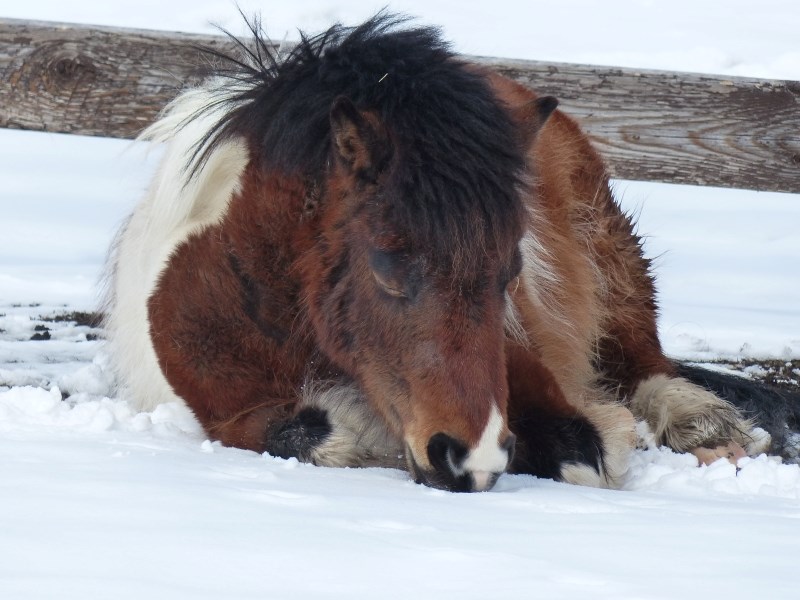Have you ever pondered about how your horse sleeps?
Does he always sleep standing up? How does he do that without falling over? Why don’t they lay down when they sleep?
I have some thoughts on answers to these questions. Some of my information comes from research, some from personal observation. Anyone who spends time with horses will probably be able to contribute additional information but here are my comments.
Horses can quite comfortably sleep standing up. They have two mechanisms in their bodies that allow this to happen. On the front legs, they have the “stay apparatus” and on the hind legs the “check apparatus” (sometimes just referred to as the “stay apparatus” as well). These are names for a combination of tendons and ligaments that keep the legs “locked” in a supporting position.
According to the University of Pennsylvania’s School of Veterinary Medicine “the stay apparatus transfers weight from the thoracic limb muscles to connective tissue structures that do not tire, namely tendons, ligaments or bone. With the weight shifted from muscle to connective tissue elements or bone, the horse requires less muscular activity to keep the limb stable and hold up the front end of the body.”
Quite often you will see the horse rest one hind leg thus he is snoozing or sleeping on three legs and can do so quite comfortably for periods of time. This arrangement still allows for a quick departure if necessary — there is no “unlocking” required before moving off.
You don’t see adult horses laying down for long periods of time as this can actually be more stressful on the horse. Their own weight causes pressure on their internal organs so this can be uncomfortable.
Also, it takes a considerable effort to get up and that is not good for a prey animal who needs the ability to depart fast if threatened. However, if they have a comfortable place to do so, horses will lay down and become very relaxed. They may even twitch and snore. If you watch a horse in a deep sleep, you will even see his eyes moving and sometimes his feet moving — what is he dreaming about? In my herd of horses, I have rarely seen all of them lay down at the same time — there is always one “guard” who is up and more alert than the snoozing equines on the ground.
Two weeks ago when we had the lovely warm sunny weather, most of the herd was flat out on the warm ground and the soothing sound of miniature horses snoring was quite audible. One little guy was so sound asleep that when the others horses got up, he did not move. I became concerned and started walking towards him thinking maybe he was ill but he was just in a deep sleep. I was talking to him as I approached as I didn’t want to startle him. He woke up, looked at me, got up quietly, stretched out and moseyed on over looking for an afternoon snack.
Horses still exhibit typical prey behavior in choosing when and where they sleep. They generally point their heads towards the best route for escape even though there is no evidence of predators lurking about.
When my horses are snoozing in their pens, they always have their backs to the windbreak or shelter and have heads pointed in a direction then can move off into quickly if required. Even in a stall, a horse generally sleeps with his head pointed to the door so nothing can sneak up on him and he is pointed towards the only way out.
Research is ongoing regarding how long horses sleep. So far, consensus seems to be that they only sleep two to three hours a day total. This time is the sum of many short naps and snoozes — I rarely see a horse sleep for an extended period of time.




